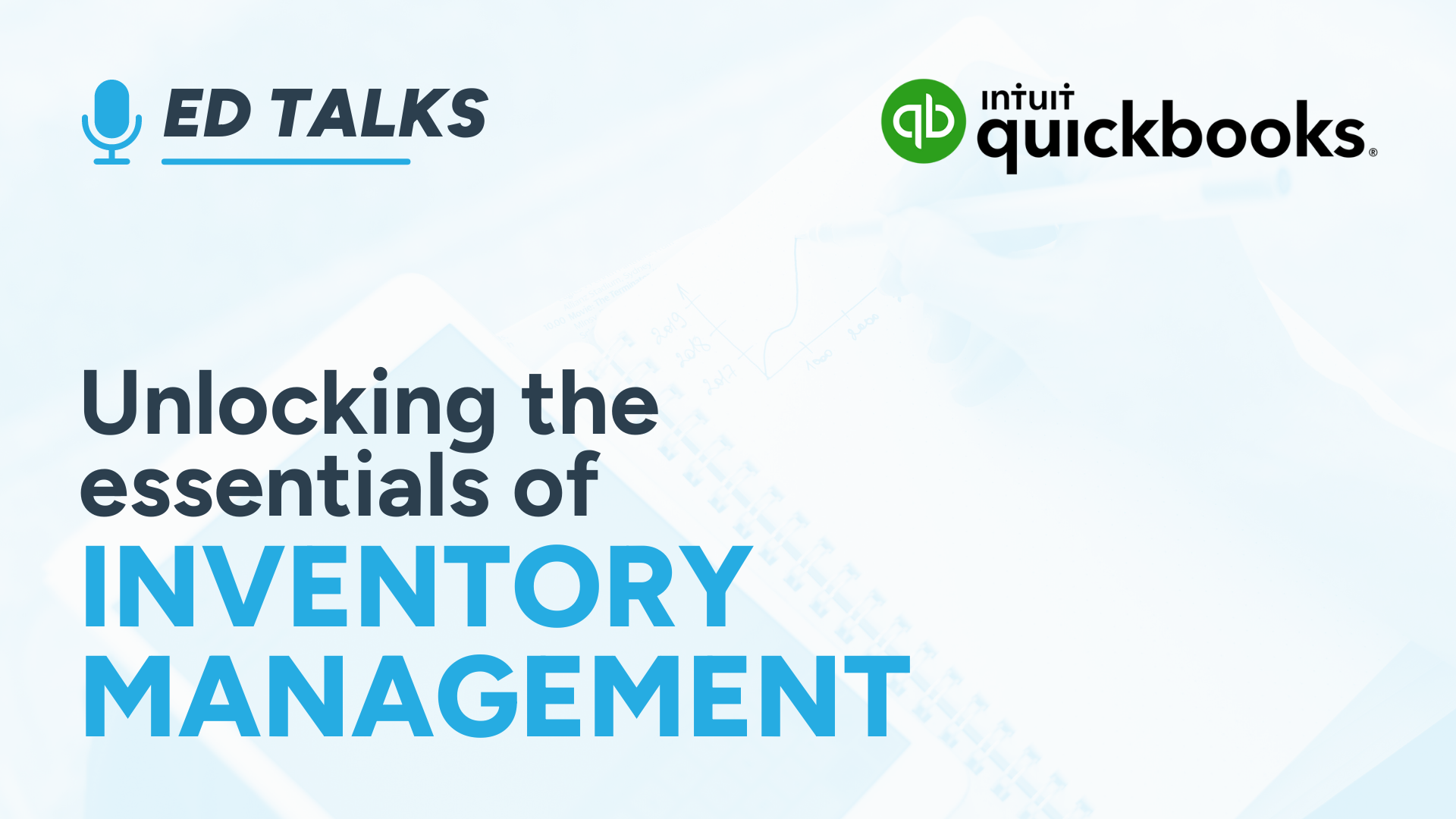
26 Feb Ed Talks – Unlocking the Essentials of Inventory Management
In today’s business climate, effective inventory management is a crucial factor that can significantly impact the success of a company. Whether you’re a wholesaler, distributor, or manufacturer, understanding the basics of inventory is essential for streamlined operations and financial success. In this article, we delve into inventory basics and explore the capabilities of QuickBooks Online (QBO) as an inventory management tool.
Can Inventory Be Managed in QBO?
QuickBooks Online is a popular accounting software, but its inventory management capabilities are relatively limited. For businesses with straightforward inventory needs, QBO may suffice. It can handle basic functions such as quantity tracking, kits or bundled items, and inventory adjustments. However, as your business requirements become more complex, QBO may prove inadequate.
When features like managing customer demand through sales orders and back orders, tracking lot or serial numbers, managing multiple warehouse locations, barcoding, and other advanced warehouse functions are essential, it becomes necessary to explore third party add-on software solutions.
Inventory Accounting Complexity
One of the distinctive aspects of inventory management is its impact on accounting processes. Unlike non-inventory parts, where purchases and sales are straightforwardly posted to cost and revenue accounts, inventory items introduce complexity.
For inventory items, purchases increase an inventory asset account on the balance sheet. When an item is sold, several entries are required, including Cost of Goods Sold (COGS), reduction of inventory, revenue, and accounts receivable (or cash). The complexity intensifies based on the chosen inventory valuation method, such as FIFO, LIFO, or Average Cost. Notably, QBO utilizes LIFO, while QuickBooks Desktop products use the Average Cost method.
Understanding Different Business Models
Companies that engage in inventory management typically fall into two categories: wholesalers/distributors or manufacturers. Wholesalers purchase products from other entities, store them in warehouses, and subsequently distribute them to customers. This process involves additional costs such as transportation and warehousing.
On the other hand, manufacturers acquire raw materials or components from suppliers and transform them into finished goods, a process known as a “Build.” In manufacturing, various costs, including non-inventory parts, landed costs, direct manufacturing overhead, and labor, may contribute to the final cost of the finished goods.
Add-On Solutions
SOS Inventory is an inventory and order management software designed for small and medium-sized businesses. SOS Inventory has many features that make it a comprehensive solution for businesses looking to streamline their inventory and order management processes. The platform’s user-friendly interface and integration capabilities make it suitable for a range of industries, providing essential tools for efficient inventory control and order fulfillment.
Cin7 is another comprehensive cloud-based inventory management system designed to streamline operations for businesses of all sizes. There are many features that collectively make Cin7 a robust solution for businesses seeking a comprehensive inventory management system. The platform’s flexibility and scalability cater to a variety of industries, providing the tools needed to efficiently manage inventory, orders, and sales across different channels.
These are just two of the many inventory add-on options that will be further discussed as we continue this exploration of inventory management. The next segment will focus on these available accounting software options that cater to the diverse needs of businesses. Additionally, we will delve into specific considerations for manufacturers, shedding light on the intricacies of their inventory management processes.
Stay tuned for valuable insights into selecting the right tools and strategies to master the art of inventory management in the ever-evolving business landscape.
To learn more about add-ons that integrate with QuickBooks Online, click here.

























